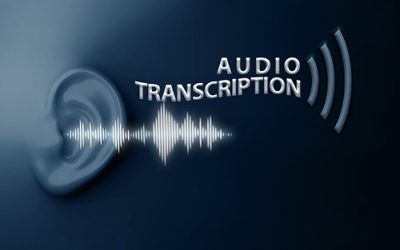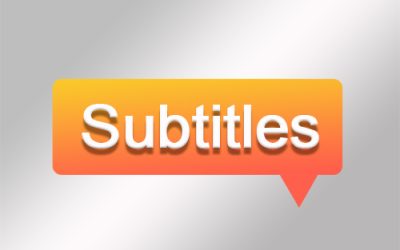Internet usage has touched new heights in recent times, with more and more people spending time online. That’s why businesses need to think seriously about making their websites accessible to all users. Web accessibility means that websites, tools, and technologies are designed and developed so that people with disabilities can use them (www.w3.org). Improving content accessibility can improve website accessibility. For instance, digital transcription plays a key role in making multimedia content accessible. Ensuring that websites and online content are accessible is required by law.
Ensure Content Meets Web Accessibility Standards
Even with technology tools, about 18% of the US population with disabilities still have issues accessing a website. Thankfully, Web Content Accessibility Guidelines (WCAG) provide web designers with standards for making online content more accessible. Let’s take a look how brands can improve content accessibility, engage users, and comply with web accessibility standards.
- Ensure that Text Content is Readable and Legible: The type on your site should be legible and people must be able to read it easily. Readability refers to how typeface is used. With proper use of typeface on a page, words, phrases, and blocks of text can be read easily. Legibility depends primarily on typeface design and indicates easily users can distinguish and recognize individual characters in lines of copy on the page. Avoid posting text that is too small and difficult to read. Make sure that the spacing between words is appropriate so that users can read words easily and correctly. Both readability and legibility are critical for content accessibility.
- Create Accessible Videos: According to Statista, in 2018, the number of digital video viewers in the US stood at 228.8 million viewers and this figure is expected to reach 248.9 million in 2022. Creating accessible videos can significantly extend their reach and usability. Accessible videos are also critical for people with disabilities. Bureau of Internet accessibility (BOIA) guidelines for creating accessible videos include:
- Using colors carefully and make sure they are sufficiently distinct
- Use easy-to-read text and font size and ensure that text remains in screen for an sufficient time
- Avoid using fast-flashing content
- Use a current video file format that loads fast and plays seamlessly
- Ensure the video player is accessible and supports captions, transcripts, and audio descriptions
- Add captions to video – text should appear along with video, match the spoken word, and be accessible to users
- Make graphical content accessible
Importantly, remember that fully accessible videos mean those that include both captions and audio transcription. Create clear, descriptive headings and captions. The BOIA recommends the following options for creating transcripts:
- Formatting captions and adding them to transcripts
- Using professional audio and video transcription services
- Using speech recognition software
- Manually typing out the content
Using the right search engine optimization (SEO) techniques such as proper use of keywords is also crucial for creating accessible content. According to the World Wide Web Consortium, “accessible websites have better search results, reduced maintenance costs, and increased audience reach, among other benefits”.
- Improve Website form Content: Website forms allow potential customers to connect you’re your business. Optimizing web forms means improving their usability by making them easy to complete. Best practices for effective web forms include reducing keystrokes and clicks, minimizing fields, avoiding duplicate fields, using visual questions, distinguishing required and optional fields, and so on.
- Improve Accessibility of Graphical Content: All graphical content from charts and infographics, icons and arrows to photos and maps must be easy to access. These images provide users with instant information and improve comprehension. Creating text captions for graphical content will improve accessibility. Image tags should describe the image content in a succinct way. In fact, all non-text content on your site can benefit from captioning. It’s also important to resize and crop images, and remove all unnecessary graphical content and image meta data.
- Ensure Captions for Meetings: Remote meetings, conferences and webinars have become more important than ever. Adding captions will enhance accessibility by providing clarity, and improving comprehension and retention among all participants.
Improve the Usability of Transcripts
The main goal of transcription is to provide information to people who cannot get it from the audio and/or video. The usability of transcripts can be improved by adding headings, links, a summary, and time stamps. According to W3-org the following options can make transcripts more useful:
- Ensure that information is in logical paragraphs, lists, and sections
- Include navigation and clarifications
- Identify the speakers based on the type of content
- Include timestamps only when necessary
- Review the video, check for text that is not repeated in the captions, and add it to the transcript
Relying on professional transcription services can ensure accurate audio and video transcription and captioning. Regardless of the complexity of the topic, an experienced business transcription company can capture the information correctly, make your content accessible, and enhance the user experience.




